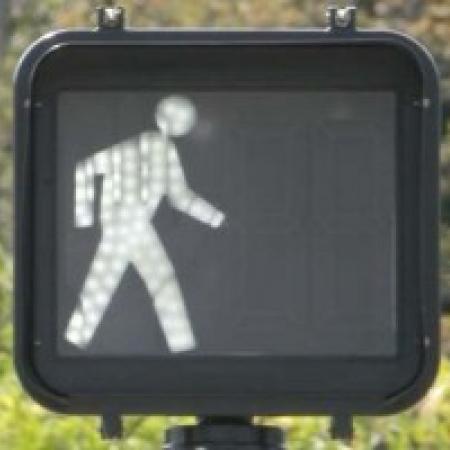AMATS has identified another October scare for those living in the Greater Akron area: pedestrian-related crashes. The agency finds that these crashes spike during the month of October compared to other months of the year.
As the Greater Akron area’s metropolitan planning organization, AMATS compiles crash-related data regarding the area’s roadway sections and intersections. This data is used in planning various safety studies and improvement projects throughout the region.
Based on its regular three-year analyses of crash records, AMATS has determined that October has significant increases in crashes involving pedestrians. The most recent evidence for this determination can be found in the agency’s analysis of nearly 401 pedestrian-related area crash records provided by the Ohio Department of Transportation spanning the years 2018 through 2020.
During the three-year period, there were 71 crashes involving pedestrians during the month of October compared to the recorded low of 14 during the month of May, according to AMATS Transportation Improvement Program Coordinator David Pulay.
While Halloween and community trick-or-treat times likely contribute to this autumnal increase in pedestrian-related crashes, Pulay notes that other factors are likely involved. As the hours of daylight get shorter, people still want to enjoy nice weather. Morning and evening activities, including children walking to and from school, occur in gradually darkening conditions. There is some evidence to support the idea that dwindling daylight is a culprit in spiking pedestrian crashes.
AMATS determined that the frequency of pedestrian-related crashes varies by light conditions. In its analysis, the agency found that 15 percent of pedestrian-related crashes occurred in periods of diminished daylight such as at dawn and dusk and on dark roadways during the month of June. That figure spikes to 51 percent in October under the same light conditions.
“Pedestrian crashes tend to increase in the morning hours between 7 and 8 a.m. and evening hours between 6 and 8 p.m. The a.m. hours are generally the times that students are going to school and people are going to work,” Pulay continues, “The p.m. hours are generally recreational hours when people are walking, running, and riding bicycles.”
AMATS urges people to exercise more caution while walking and driving during those hours. Doing so can lessen their chances of becoming one of the agency’s statistics. Below are some safety tips for Greater Akron area pedestrians and motorists – not just for October – but all year.
Safety Tips
- Turn It Off – Motorists should never drive distracted and need to be particularly careful at dawn and dusk when pedestrians are out and more difficult to see.
- Yield – Motorists must yield the right of way to pedestrians crossing in marked or unmarked crosswalks. (Please note that there is technically a crosswalk at every street or road intersection even if it’s not marked.)
- Stay on the Sidewalk – Pedestrians should stay on sidewalks whenever possible.
- Be Attentive – It’s best to be extra cautious. Don’t assume that drivers or pedestrians are paying attention at crossings.
- Face the Right Way – When a sidewalk is not available, pedestrians should walk facing traffic.
- Slow Down – Results show that the average risk of severe injury for a pedestrian struck by a vehicle is: 25 percent at 23 mph; 50 percent at 31 mph; 75 percent at 39 mph; and 90 percent at 46 mph.
- Lighten Up – Pedestrians generally should not assume that they are visible to motorists, especially at night. Lights and reflective clothing are good accessories for pedestrians in dark conditions.
- Daylight Helps – You’re less likely to have an accident during daylight hours. Remember, June has an average of 15 hours of daylight, from approximately 6 a.m. to 9 p.m. In contrast, October has an average of 11 hours of daylight, from approximately 7:30 a.m. to 6:30 p.m.
In 2018, the region recorded 149 pedestrian-related crashes, which was followed by a slight increase in 2019 to 152 crashes. Pulay notes that, with the onset of the COVID-19 Pandemic in 2020, the number of crashes dropped precipitously to 100 for the entire year. This decrease may be due to less traffic and many schools being closed as students had virtual learning from home.

